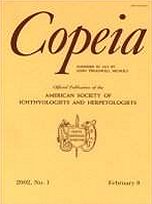Distinct differences in body size exist among three Rana grylio populations in areas of the Florida Everglades that differ in frog harvest pressure and hydroperiod. Frogs from two populations are harvested regularly throughout the year, while those in the third are protected from harvest. We compared seasonal and sex differences in diet, reproduction, and growth across these populations to examine life-history patterns. By volume, crayfish and anurans were the most abundant prey items for all adults across sites. Frogs from drier sites consumed more crayfish than frogs from the wettest site. Anurans were abundant in the diet during the wet season, while crayfish and fish were abundant during the dry season. More frogs with empty stomachs were captured during the wet season than the dry season. Feeding, growth, and fat deposition were greatest during the dry season across all sites. Although females were found in all reproductive stages throughout the year, the highest percentage of females had mature ova during the late dry season and spent ovaries during the early wet season. Individual patterns of growth were similar across all sites and matched historical growth data from the 1950s. Differences in body size among sites were most likely attributable to differential mortality (i.e., harvest pressure, predation) rather than to differences in food access or growth.
How to translate text using browser tools
1 May 2007
Comparison of Diet, Reproductive Biology, and Growth of the Pig Frog (Rana Grylio) from Harvested and Protected Areas of The Florida Everglades
Cristina A. Ugarte,
Kenneth G. Rice,
Maureen A. Donnelly
ACCESS THE FULL ARTICLE





